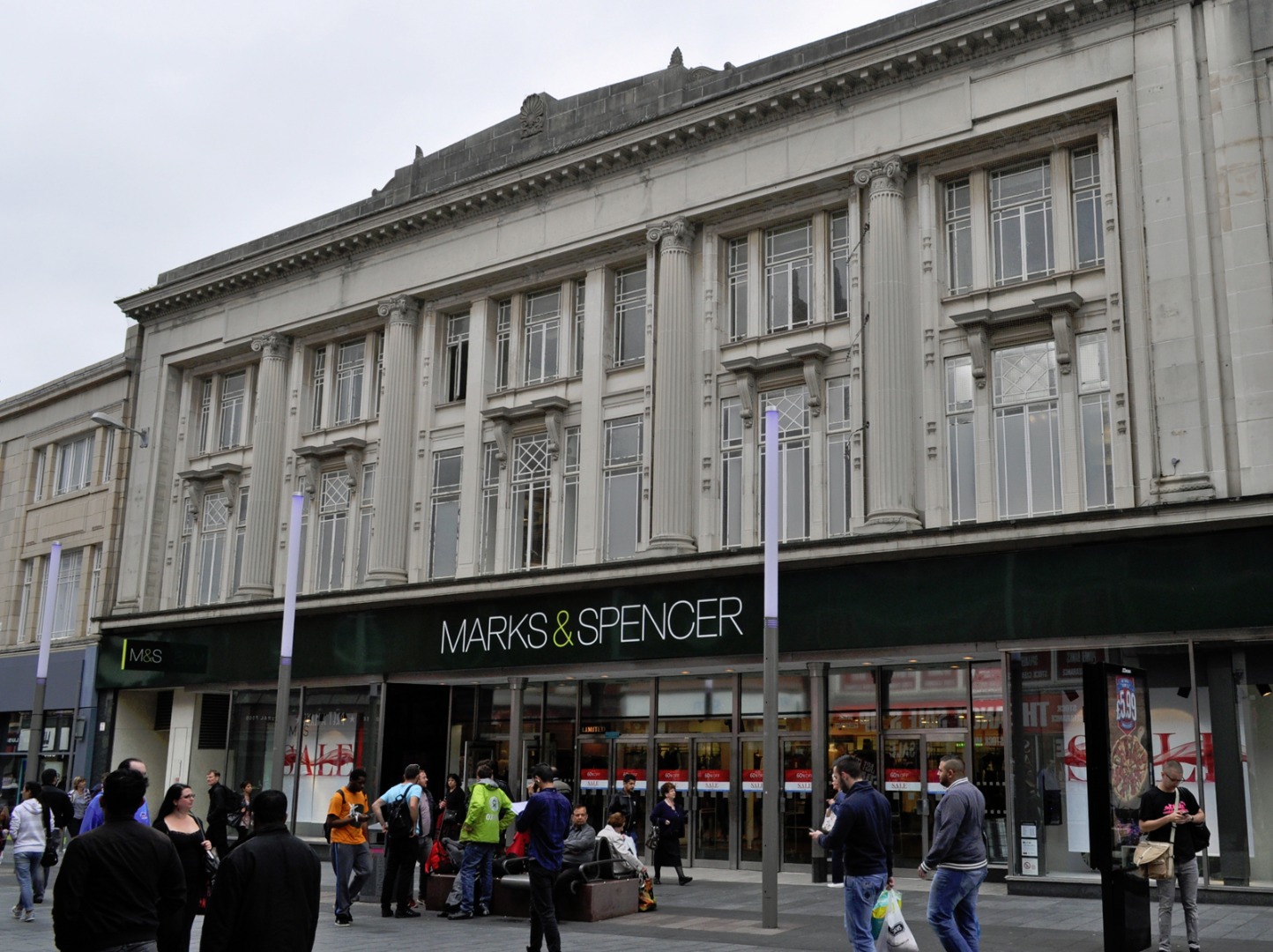Difficult Times
In the 1980s high street competition intensified for Marks & Spencer. Companies like Next took customers away and forced Marks & Spencer to look at how it could change to compete in this new environment.
By the mid-1990s, Marks & Spencer directors had turned the business around and it reached profits of over one billion pounds a year. It was estimated that the company still bought 75% of the UK domestic textile production in 1995. Other fashion chain stores bought as little as 14% of their supplies from British companies. The success or failure of Marks & Spencer was critical to the prosperity of the British knitting industry.
A slump in sales hit the fashion retail sector in 1999 and marked the beginning of further problems for Marks & Spencer. Profits were halved to between £500 and £600 million, market share fell from 15% to 11%, and its shares lost two thirds of their value in three years. Other companies faced similar problems and did not survive. C&A closed all its UK stores after losing a million pounds a week for two or three years.

Marks & Spencer in Leicester City Centre
The cost of recovery
Marks & Spencer responded to the crisis by undertaking a further review of its strategy. For the British knitting industry, a devastating blow was struck when Marks & Spencer sought to save £110 million by sourcing supplies from overseas. Major companies, including Richard Roberts of Leicester, lost their Marks & Spencer contract. Other contracts were reallocated to focus the production of specific ranges on individual companies. Lingerie contracts were increased with the Martin Emprex Group, Sutton in Ashfield, at the expense of their knitwear contracts which were transferred elsewhere.
The security provided by a contract with Marks & Spencer had been wiped out for many companies and the knitting industry was left with an uncertain future. For those companies that retained a contract, competitive pressures had reduced the profits made on them. Coats Viyella decided that it was time to close its knitwear division, four factories were closed and three sold off. Courtaulds had diversified and opened up overseas factories to cut costs in the previous two decades, but the Marks & Spencer problems led to a fall in sales and left the company vulnerable. The Sara Lee Corporation from the US subsequently bought Courtaulds for £150 million.
In the 1980s, Marks & Spencer still bought 90% of its supplies from British companies. The policy of sourcing goods from overseas meant that by 2000 this figure had fallen to 40%. This change had a significant knock on effect on the industry, with over 50,000 jobs in the knitting industry lost in Nottingham, Leicester, and Loughborough between 1992 and 2001.
Marks & Spencer sales
While Marks & Spencer looked to overseas companies for supplies, the company itself was selling overseas subsidiaries. Stores in France, Belgium, Spain and the US amongst others were sold off to respective national chains. In 2002, Marks & Spencer reported that its business had turned the corner and its clothing business was recovering. By 2003, company profits had increased by 21% to £761.8 million and it had recovered 0.7% of the British clothing market share to give it a total of 11.3%. But this was all too late to arrest a further decline in the East Midlands manufacturing base.